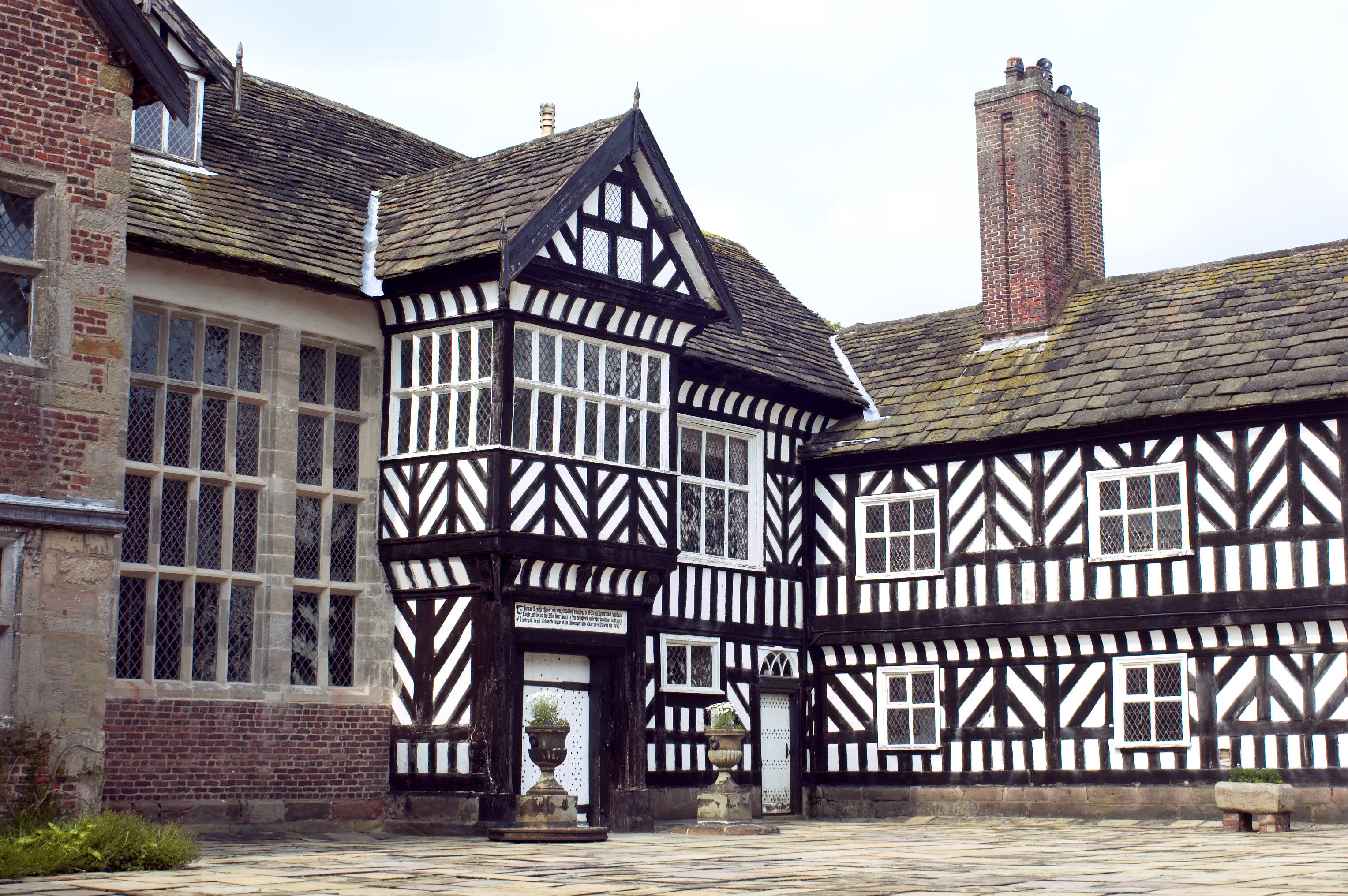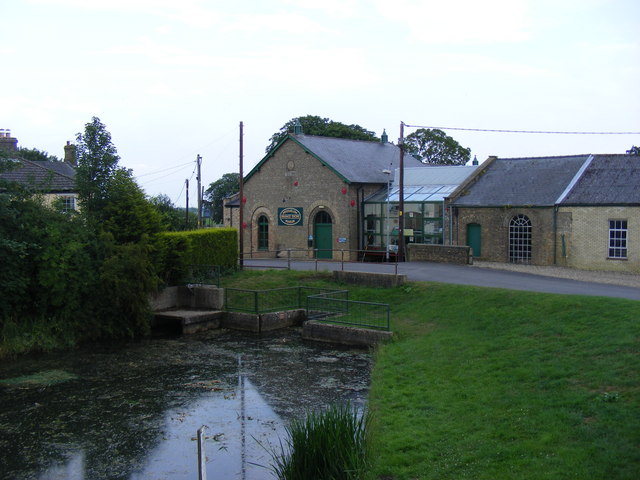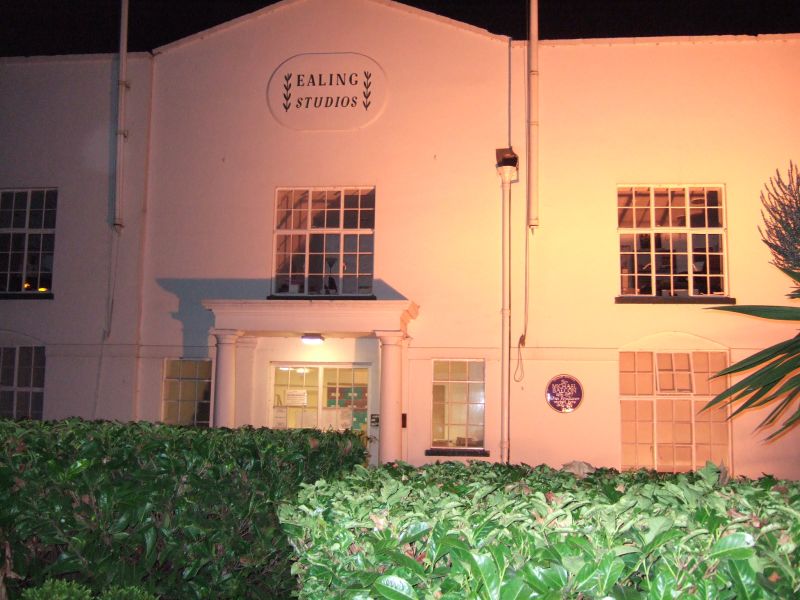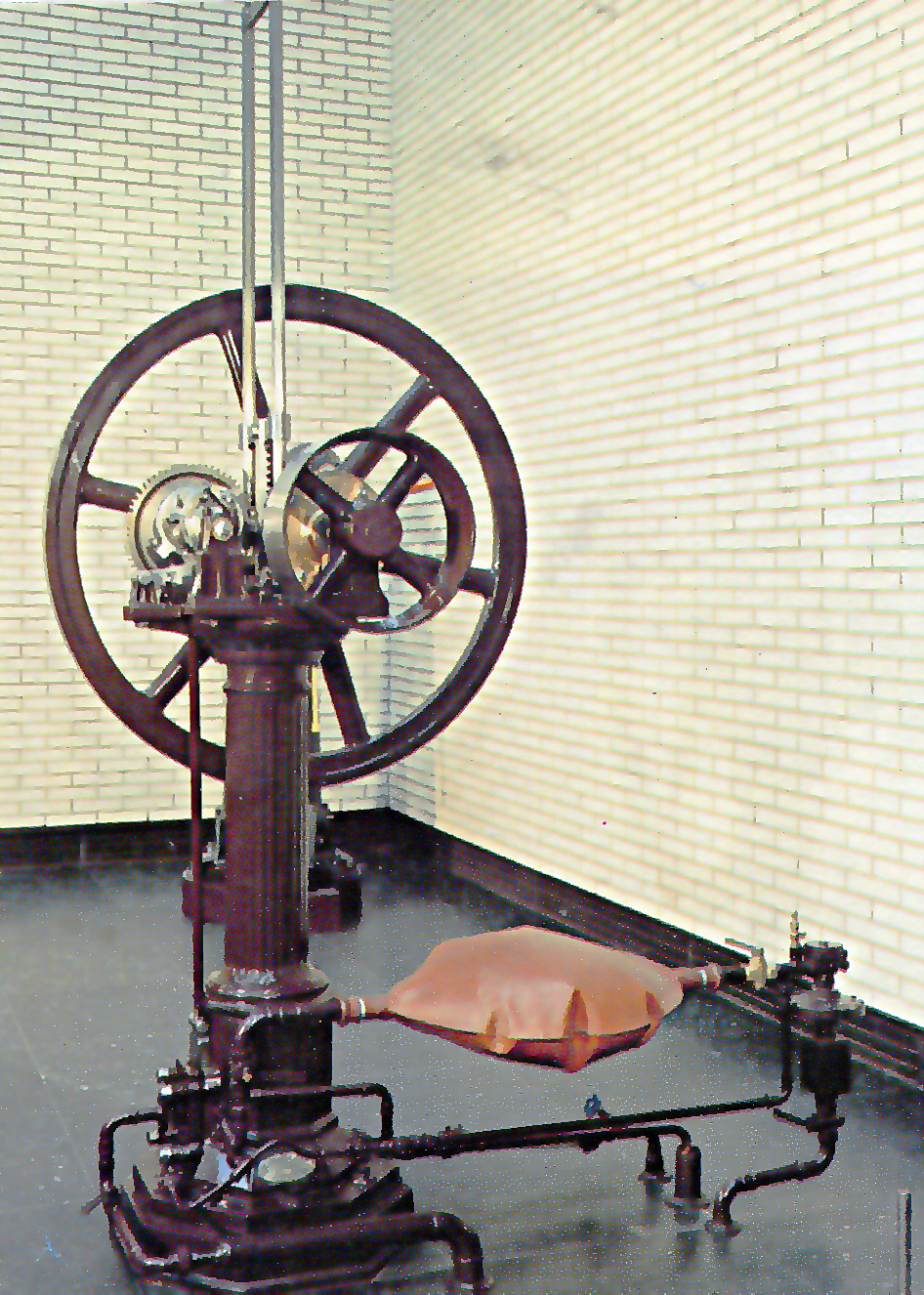|
Anson Engine Museum
The Anson Engine Museum is situated on the site of the old Anson colliery in Poynton, Cheshire, England. It is the work of Les Cawley and Geoff Challinor who began collecting and showing stationary engines for a hobby. The museum now has one of the largest collections of engines in Europe. The museum site also includes a working blacksmith's smithy and carpentry shop and a café. Location The Anson Engine Museum is situated on the site of the old Anson colliery in Poynton, Cheshire, England. History Coal Coal is found outcropping to the east of Towers Road, Poynton which corresponds to the line of the Red Rock Fault; that is at the surface. It has been worked from early times. The earliest record to be found is a lease dated 28 February 1589, which talks of the'' "Coal pit at Wourthe lately occupied by George Finche"''. This was originally worked on the surface then by shallow shafts, and later by deeper shafts with waterwheels or steam engines operating pumps and winding ... [...More Info...] [...Related Items...] OR: [Wikipedia] [Google] [Baidu] |
Mirrlees No1 Engine -Anson Museum - BulldozerD11-IMG 2681 , current owner of the diesel engine manufacturer, Mirrlees, Bickerton & Day
{{surname, Mirrlees ...
Mirrlees is a surname. Notable people with the surname include: *Hope Mirrlees (1887–1978), English translator, poet and novelist *James Mirrlees (born 1936), Scottish economist See also * MAN Diesel MAN Diesel SE was a German manufacturer of large-bore diesel engines for marine propulsion systems and power plant applications. In 2010 it was merged with MAN Turbo to form MAN Diesel & Turbo. History * In 1980, MAN acquired the Burmeister & ... [...More Info...] [...Related Items...] OR: [Wikipedia] [Google] [Baidu] |
Crossley
Crossley, based in Manchester, United Kingdom, was a pioneering company in the production of internal combustion engines. Since 1988 it has been part of the Rolls-Royce Power Engineering group. More than 100,000 Crossley oil and gas engines have been built. History Crossley Brothers Crossley Brothers was set up in 1867 by brothers Francis (1839–97) and William J.(1844–1911). Francis, with help from his uncle, bought the engineering business of John M Dunlop at Great Marlborough Street in Manchester city centre, including manufacturing pumps, presses, and small steam engines. William (''Sir'' William from 1910 – Baronet) joined his brother shortly after the purchase. The company name was initially changed to Crossley Brothers and Dunlop. Each of the brothers had served engineering apprenticeships: Francis, known as Frank, at Robert Stephenson and Company; and William at W.G. Armstrong, both in Newcastle upon Tyne. William concentrated on the business side, Frank prov ... [...More Info...] [...Related Items...] OR: [Wikipedia] [Google] [Baidu] |
List Of Museums In Cheshire
In this list of museums in Cheshire, England, museums are defined as institutions (including non-profit organisations, government entities and private businesses) that collect and care for objects of cultural, artistic, scientific or historical interest, and that make their collections or related exhibits available for public viewing. Also included are non-profit art galleries and university art galleries. Museums that exist only in cyberspace (virtual museums) are not included. Many Cheshire museums focus on the area's industrial heritage, including Quarry Bank Mill in Styal and Clarence Mill in Bollington (cotton), the Macclesfield Museums (silk), the Catalyst Science Discovery Centre in Widnes (chemicals), and the Lion Salt Works in Marston and Weaver Hall Museum in Northwich (salt). The Anson Engine Museum in Poynton is on the site of a former colliery. Jodrell Bank Discovery Centre, on the site of the observatory in Lower Withington, explores astronomy. There are also sev ... [...More Info...] [...Related Items...] OR: [Wikipedia] [Google] [Baidu] |
Prickwillow Museum
Prickwillow Museum, formerly known as the Prickwillow Drainage Engine Museum, tells the story of the changing face of the Fens and its network of drainage systems and pumping stations. The museum is housed in the old pumping station in Prickwillow, east of the city of Ely in Cambridgeshire, England. The museum contains a major collection of large diesel pumping engines which have all been restored to working order. Prickwillow Museum is funded and run by the Prickwillow Engine Trust, a registered charity, and has received funding from the Heritage Lottery Fund and The Ouse Washes Landscape Partnership. For one weekend in the early autumn every year the museum hosts the Prickwillow ploughing festival. See also ; Other land drainage engines that are now preserved as museums * Stretham Old Engine * Dogdyke Pumping Station *Wicken Fen Wicken Fen is a biological Site of Special Scientific Interest west of Wicken in Cambridgeshire. It is also a National Nature Reserve, an ... [...More Info...] [...Related Items...] OR: [Wikipedia] [Google] [Baidu] |
Internal Fire - Museum Of Power
The Internal Fire Museum of Power is a museum of internal combustion engines in West Wales. The museum's collection is mostly of larger stationary diesel engines, as used for generating sets and pumping stations. The museum is located at Tan-y-groes, Ceredigion, near Cardigan. Exhibits Most of the engines have been restored to working order. Several engines are in operation when the museum is open. Diesel The museum has the oldest working diesel engine in the UK, a 1912 Sulzer single cylinder air-blast injection Diesel, an example of the original Rudolf Diesel design. Steam The museum houses over 200 tons of working engines in nine halls and in 2020 was in the process of creating a new steam hall to house a 1903, J & E Wood, 500 hp tandem compound along with an 1879, John Penn, twin cylinder oscillating paddle steamer (ex Empress) as well as a number of smaller engines including the only surviving Petter steam engine. In 2017, the museum's second Engineering Heritage A ... [...More Info...] [...Related Items...] OR: [Wikipedia] [Google] [Baidu] |
Ealing Studios
Ealing Studios is a television and film production company and facilities provider at Ealing Green in West London. Will Barker bought the White Lodge on Ealing Green in 1902 as a base for film making, and films have been made on the site ever since. It is the oldest continuously working studio facility for film production in the world, and the current stages were opened for the use of sound in 1931. It is best known for a series of classic films produced in the post-WWII years, including '' Kind Hearts and Coronets'' (1949), '' Passport to Pimlico'' (1949), '' The Lavender Hill Mob'' (1951), and '' The Ladykillers'' (1955). The BBC owned and filmed at the Studios for forty years from 1955 until 1995. Since 2000, Ealing Studios has resumed releasing films under its own name, including the revived '' St Trinian's'' franchise. In more recent times, films shot here include ''The Importance of Being Earnest'' (2002) and '' Shaun of the Dead'' (2004), as well as '' The Theory o ... [...More Info...] [...Related Items...] OR: [Wikipedia] [Google] [Baidu] |
Ruston & Hornsby
Ruston & Hornsby was an industrial equipment manufacturer in Lincoln, England founded in 1918. The company is best known as a manufacturer of narrow and standard gauge diesel locomotives and also of steam shovels. Other products included cars, steam locomotives and a range of internal combustion engines, and later gas turbines. It is now a subsidiary of Siemens. Background Proctor & Burton was established in 1840, operating as millwrights and engineers. It became Ruston, Proctor and Company in 1857 when Joseph Ruston joined them, acquiring limited liability status in 1899. From 1866 it built a number of four and six-coupled tank locomotives, one of which was sent to the Paris Exhibition in 1867. In 1868 it built five 0-6-0 tank engines for the Great Eastern Railway to the design of Samuel Waite Johnson. Three of these were converted to crane tanks, two of which lasted until 1952, aged eighty-four. Among the company's output were sixteen for Argentina and some for ... [...More Info...] [...Related Items...] OR: [Wikipedia] [Google] [Baidu] |
Atkinson Cycle
The Atkinson-cycle engine is a type of internal combustion engine invented by James Atkinson in 1882. The Atkinson cycle is designed to provide efficiency at the expense of power density. A variation of this approach is used in some modern automobile engines. While originally seen exclusively in hybrid electric applications such as the earlier-generation Toyota Prius, later hybrids and some non-hybrid vehicles now feature engines with variable valve timing, which can run in the Atkinson cycle as a part-time operating regimen, giving good economy while running in Atkinson cycle, and conventional power density when running as a conventional, Otto cycle engine. Design Atkinson produced three different designs that had a short compression stroke and a longer expansion stroke. The first Atkinson-cycle engine, the ''differential engine'', used opposed pistons. The second and best-known design was the ''cycle engine'', which used an over-center arm to create four piston strokes i ... [...More Info...] [...Related Items...] OR: [Wikipedia] [Google] [Baidu] |
Six Stroke Engine
The term six-stroke engine has been applied to a number of alternative internal combustion engine designs that attempt to improve on traditional two-stroke and four-stroke engines. Claimed advantages may include increased fuel efficiency, reduced mechanical complexity, and/or reduced emissions. These engines can be divided into two groups based on the number of pistons that contribute to the six strokes. In the single-piston designs, the engine captures the heat lost from the four-stroke Otto cycle or Diesel cycle and uses it to drive an additional power and exhaust stroke of the piston in the same cylinder in an attempt to improve fuel efficiency and/or assist with engine cooling. The pistons in this type of six-stroke engine go up and down three times for each injection of fuel. These designs use either steam or air as the working fluid for the additional power stroke. The designs in which the six strokes are determined by the interactions between two pistons are more divers ... [...More Info...] [...Related Items...] OR: [Wikipedia] [Google] [Baidu] |
Institution Of Mechanical Engineers
The Institution of Mechanical Engineers (IMechE) is an independent professional association and learned society headquartered in London, United Kingdom, that represents mechanical engineers and the engineering profession. With over 120,000 members in 140 countries, working across industries such as railways, automotive, aerospace, manufacturing, energy, biomedical and construction, the Institution is licensed by the Engineering Council to assess candidates for inclusion on its Register of Chartered Engineers, Incorporated Engineers and Engineering Technicians. The Institution was founded at the Queen's Hotel, Birmingham, by George Stephenson in 1847. It received a Royal Charter in 1930. The Institution's headquarters, purpose-built for the Institution in 1899, is situated at No. 1 Birdcage Walk in central London. Origins Informal meetings are said to have taken place in 1846, at locomotive designer Charles Beyer's house in Cecil Street, Manchester, or alternatively at Bro ... [...More Info...] [...Related Items...] OR: [Wikipedia] [Google] [Baidu] |
Engineering Heritage Hallmark Scheme
The Engineering Heritage Awards, formally known as the ''Engineering Heritage Hallmark Scheme'', were established by the Institution of Mechanical Engineers (IMechE) in 1984 to identify and promote artefacts, locations, collections and landmarks of significant engineering importance. Development of the Awards Engineering Heritage Hallmark Scheme (EHHS) In 1984, IMechE launched its Engineering Heritage Hallmark Scheme. For an object or artefact etc. to be considered for an award, an IMechE member would be required to complete a nomination form and submit it to the Institution. Upon submission, two referees would be appointed, one nominated by the Regional Committee where the object is located and a second independent referee. The submissions from both referees would then be reviewed by the Institution's Technical Support department before a decision was taken on the application. Engineering Heritage Awards (EHA) In 2007, the Institution established the Heritage Committee to r ... [...More Info...] [...Related Items...] OR: [Wikipedia] [Google] [Baidu] |
Nicolaus Otto
Nicolaus August Otto (10 June 1832, Holzhausen an der Haide, Nassau – 26 January 1891, Cologne) was a German engineer who successfully developed the compressed charge internal combustion engine which ran on petroleum gas and led to the modern internal combustion engine. The Association of German Engineers (VDI) created DIN standard 1940 which says "Otto Engine: internal combustion engine in which the ignition of the compressed fuel-air mixture is initiated by a timed spark", which has been applied to all engines of this type since. Biography Nicolaus August Otto was born on 10 June 1832 in Holzhausen an der Haide, Germany. He was the youngest of six children. His father died in 1832. He began school in 1838. After six years of good performance he moved to the high school in Langenschwalbach until 1848. He did not complete his studies but was cited for good performance. His main interest in school had been in science and technology but he graduated after three years as a ... [...More Info...] [...Related Items...] OR: [Wikipedia] [Google] [Baidu] |
.jpg)





